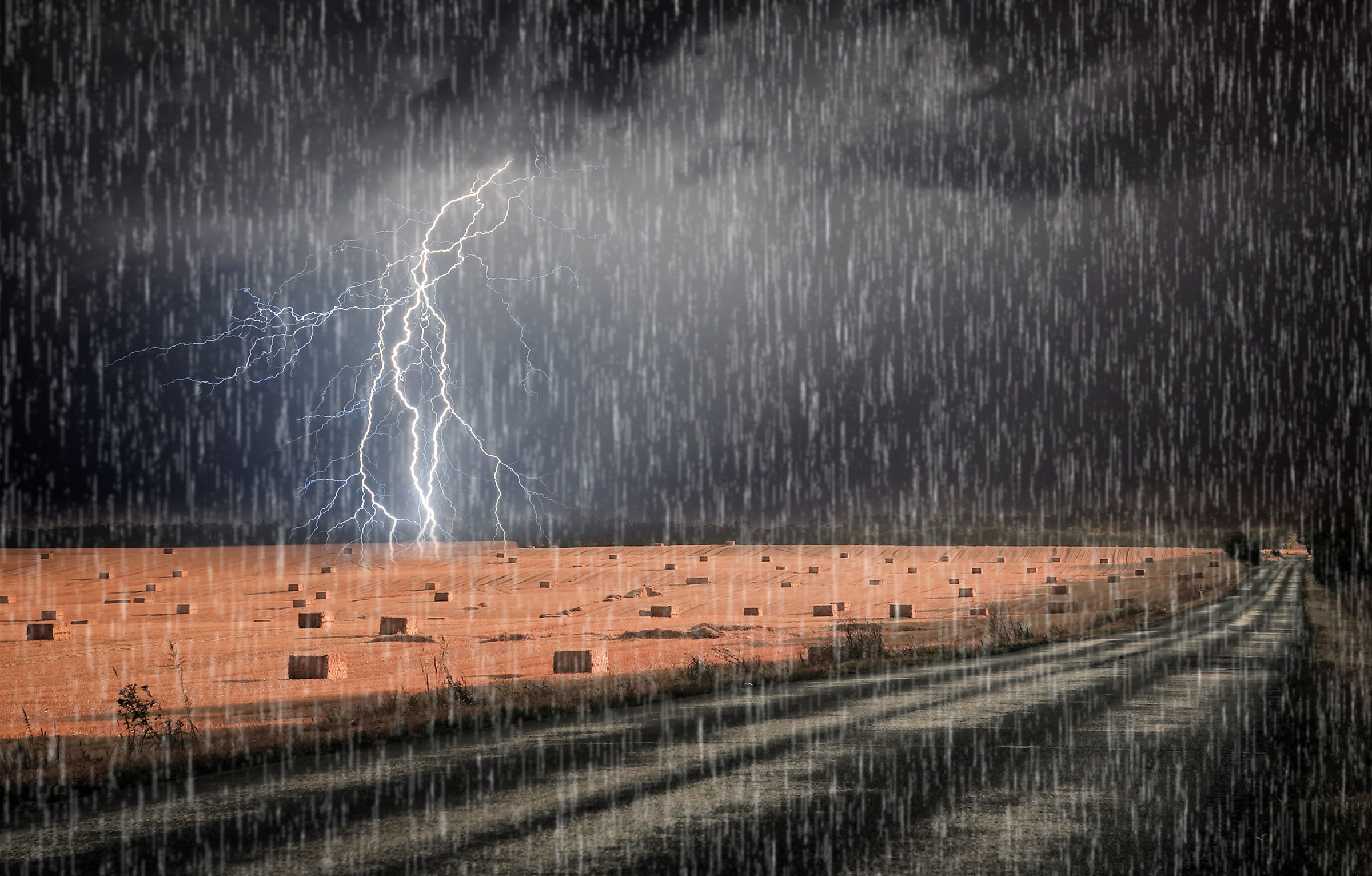
From the Midwest to the Northeast, this has been a bad year for hay, and rain is the culprit. Rain is always the question mark when growing hay; it seems either there is not enough of it, or too much. From the drought we’ve experienced the past few years, we’ve now gone to rain that appears every day or two. And while rain makes the grass grow, it also ruins the hay.
Some farmers have not managed a single crop of hay yet (in July). In Vermont there are areas that had rain for 25 out of 30 days in May. How do you make hay under those conditions?
Even if you start on a beautiful, sunny day. by the time you are half way through cutting the hay, rain mgiht be drenching the newly cut stalks. Or you get it all cut, but by the time you get home it is pouring.
In our area (the Northeast), although it varies, it generally takes about three days to cure hay once it is cut. That would be in normal weather. If you luck into blistering hot days and with some wind, the hay can be baled after two days.
After the hay is cut, it’s time to ‘ted’ it. A tedder lifts the hay and spreads it out to allow it to dry faster and more evenly. At Eastern Hay, we ted our hay three times after it is cut.
On the final day, the hay is raked into a “windrow” so that the baler can come through and bale and process it. A windrow is piled high so that the wind can blow through it and complete the drying process. Within an hour after the hay is raked into windrows, the baler comes through, creating bales of hay.
In the Rockies and on the West Coast, the process is a lot simpler. The dry climate eliminates worries about rain, with irrigation keeping the grass watered until it is time to cut it. This system produces hay with a lot more color in it. Out west it isn’t even necessary to ted the hay. After raking and baling it is good to go. This allows the hay to be cut and baled in only two days..
East Coast hay often is a lot less green in color because moisture in the form of rain degrades plants, knocking down its nutritional value. When you cut your lawn, it turns brown. So when you cut hay you ted it in order to get the moisture off the stalks by letting the wind go through it.
Because of the crucial timing required to cut hay and let it cure properly, farmers on the East Coast become very dependent on weatherman, and they are constantly consulting weather reports. Our favorite here at Eastern Hay is Joe Bastardi at Weatherbell Analytics.
This season’s weather makes it particularly important for you as a horse owner to be very picky about the hay you buy.
If you go to your local guy who grows hay, you need to do some detective work as the hay might be compromised. With rain every other day (or every day!), it’s hard to find hay that hasn’t been compromised. Be sure to ask the grower, “Was the hay rained on?”
And rely on those all-important barometers of good or bad hay: your senses. Does the hay look good, fresh and green? Or is it brown inside (the outside of the bale might be yellow or brownish due to sun bleaching), or do you see tell-tale white puffs when you open a bale?
Stick your nose in it (not if you see the puffs of mold of course!). How does it smell? Like a dirty, wet basement? That’s mold. Fresh hay smells fresh…like grass. Feel it. Is it stalky? Are there prickers, dust or other extraneous material? If it feels rough in your hands, how will it feel in your horse’s mouth? Good hay has a fine texture, feeling soft in your hands. In addition, it has a high leaf to stem ratio, as the majority of the digestible nutrients are found in the leaves.
So where do you find good, uncompromised hay, in this tough growing season? That’s where we come in. Eastern Hay has the reach that many local hay growers and suppliers don’t have. We can pull hay from 25 states, giving us a broad edge in finding a source of quality hay for your horses.
So if this year’s weather has created problems where you normally buy hay, we’re here to serve you. We can provide you with top-quality hay that is not compromised by this season of endless rain.
For more information contact Eastern Hay, Pawling, NY, www.easternhay.com; easternhay@yahoo.com; 845-855-3291. This article was written by By Ann Jamieson.


